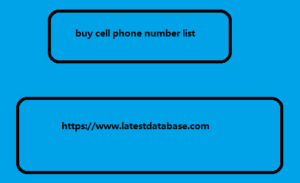Brands are born with their audience, market and society in mind. However, all of these factors change over the years, which means adjustments are necessary. A good rebranding helps companies avoid losing ground, which happens when their ideas, positions and even visual appearance become stuck in time.Some companies use rebranding as a way to correct mistakes, which is valid, but not always effective. As much as brands need consistency, changes can be good, as long as they happen in a structured way and, above all, for good reasons. That’s what rebranding is all about. We’ll talk more about this topic later. Stay tuned.
What is a rebranding?
Rebranding, or brand repositioning, is the process that companies go through to make adjustments, whether significant or complete, in the way they position themselves to thend the market.
Many people who don’t know exactly what rebranding means have already noticed when rebrandings have happened in companies they follow, like or consume. This is because it is a completely common and even recurring process. Therefore, it is not just a visual issue, a mistake that is often made.
There are companies that believe that changing their appearance is enough to become a new brand. Generally, attitudes like this are taken as a way of trying to change relationship problems, management scandals or other larger issues.
Rebranding includes changing the visual identity, but this work is only part of the brand repositioning process, which should also include.
You can buy your perfect database from the most recent mailing database. The operations of your business. Can be improved with the usage of this buy cell phone number list most recent data. Your clientele’s desire will increase as a result. Assuming you are capable of performing your marketing-related tasks. You can improve your company and gain access to. The relevant information by using our corporate data.
Incremental and radical
Rebranding is a process that can be done in two ways: incremental and radical. Each of these options will be effective in a different way, depending bold data on the brand’s objectives, its current situation and the context in which it is located.
When we talk about incremental rebranding, we are talking about companies that only need small adjustments in their positioning. This may kuwait email library not even include visual changes. In this case, a great example was the change in positioning of beer brands, when they stopped hypersexualizing women in their commercials.
Radical changes in rebranding cases are those that practically put new brands on the market, which sometimes even includes significant name changes. Here, we are talking about companies that need to change everything, possibly due to advanced loss of market share, controversies or repositioning of commercial strategy.
Why do companies rebrand?
Rebranding is a large-scale project that requires many changes based on relevant ideas, studies and analyses. Therefore, it is important to invest in this repositioning only if it makes sense for your company.
Brands don’t need to change because their competitors have changed. After all, if the results are good and if there is a fit with the market and audience, there is no reason to go down other paths.
Big brands know that going through a rebranding process is a serious matter, which costs time, money and requires a lot of repositioning actions in the market. Therefore, it may be necessary if your company finds itself in any of the situations below. Find out!
Desire to reach a new audience
It is common for companies to realize, at some point, that they can reach a different type of audience than the one they currently target. This is quite common when we are talking about brands that start selling new and services, which, naturally, expands this target audience. In these cases, the company must review its form of communication and, at times, adapt its commercial offering.
Change in the brand’s core message
Brands can continue selling the same product, at the same price, to the same people, and still change their message. This type of change is often motivated by the way society begins to view relationships, concepts, and beliefs.
Here, we can once again recall the example of beer brands. After all, these companies continue to use their core product, but now they are targeting women, not just men.
The change in message is sometimes sensitive, but it will guide absolutely everything the company does: its tone, language, its marketing strategies, its advertising line and even communication in general.
Entry into a new product niche
It is also common for companies to start offering new products within what people already know as their range of products. In these cases, simply expanding the catalog can seem strange, even if it does not initially affect commercial results.
The first major challenge of entering a new process niche is to connect these items with the brand. After all, if the company has never sold them before, how can it make the public see the meaning of this new offering? Therefore, it is necessary to show that these new products are related to the brand’s new mission.
In these cases, rebrandings are more than necessary to reposition the company in the market and change the way it is seen. Thus, brands stop being about product “X” and start being about experience “Y”, which includes a wider range of items.
5 rebranding examples to inspire you
Talking about rebranding and its meaning is not always clear if we do not contextualize these changes with successful cases from the market, which are not lacking. Therefore, we have selected some successful cases to talk a little more about them.
1. Burger King Rebranding
The giant fast food chain Burger King recently underwent a rebranding with a greater focus on communication, design and brand. Therefore, in this example, we can say that it was an incremental work, since the company did not make structural changes to its business model, products or anything deeper.Basically, what Burger King designed was a communication applied to digital, its approaches and formats. Thus, the company changed its visual identity, making the brand much cleaner and more modern.Even though there is no explicit intention, this modernization also helps to capture the younger, internet-native audience.
2. Victoria’s Secret Rebranding
One of the most significant rebrandings in recent times was that of lingerie brand Victoria’s Secret. The company is betting on a major adjustment in its vision of values, basically consisting of replacing the valorization of the image of women with reinforcing female empowerment and voice.
To achieve this, the company changed its roots: before, the models representing the brand were called “Angels”, a name that has since been discontinued. With this, the famous fashion shows in which women wore angel wings and lingerie from the new collections also ended.
To replace the Angels, the company created the a platform for new faces of the brand, focusing on empowerment, gender and racial diversity, and the debate of issues relevant to the female world. Without a doubt, a radical rebranding.
3. Nubank rebranding
New companies can also change their brands, even just a few years after starting their activities. A great example is Nubank, which underwent a major rebranding just eight years after starting its activities.
4. Rebranding Natura
Natura is one of the most important cases seen in the Brazilian market in recent years, because the company decided to change the way it viewed its processes and the market. The starting point for this change was the adoption of sustainable production, placing this as a factor in connecting with consumers. The company is keen to show how it exploits Brazil’s natural resources in a responsible, environmentally friendly manner, and generally values Brazil’s roots.
Furthermore, Natura also positions itself as a company that cares about diversity, especially in a country as diverse as Brazil. Therefore, the company always addresses social issues in its campaigns.
5. Rebranding Ponto Frio
Modernizing brands involves positioning them as digital companies, or at least, companies that have a strong and consistent presence on the internet. This was the starting point for Ponto Frio to become simply Ponto.
With the slogan “Straight to the Point”, the company manages to summarize its new phase very well: more modern, digital, with a simpler experience and speaking the language of its consumers. Without ceasing to be the good old Ponto Frio from a commercial point of view, the company manages to better approach the younger audience, digital natives.
To tie this idea together and create the right connection, Ponto has invested heavily in campaigns with digital influencers. In addition, the traditional combination of red and white has given way to black and orange, also with a minimalist logo.
Rebranding is undoubtedly a process that every company goes through at some point. Given this, the important thing is to do it the right way, when necessary and if necessary. addition to knowing how to conceptualize these changes.
To successfully rebrand, creating a is the right way to access essential company information. Learn more about this practice!



